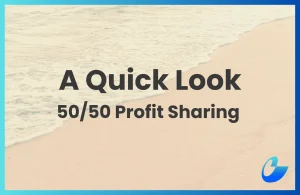If you’re new to preparing for an investment round or bringing on new shareholders, chances are you’ll come across the term Share Subscription Agreement (“SSA”) for the first time.
This document sets out the terms on which an investor agrees to subscribe to new shares and forms the legal backbone of the deal.

Most SSAs are built on top of common clauses you should familiarise yourself with, and below, we explain 13 key SSA clauses in what many lawyers are allergic to: Plain English!
Let’s begin.
Key SSA terms
Closing Conditions
Sets out what needs to happen before closing (i.e. issuance of shares).
Includes delivery of share certificates, payment confirmation, and board resolutions.
Confidentiality
Prevents either party from disclosing deal terms or sensitive business information.
Especially important if commercial or Intellectual Property disclosures were made during negotiation.
Conditions Precedent
Conditions that must be fulfilled before the subscription completes.
Examples: Shareholder or board approval, execution of related agreements (like a Shareholders’ Agreement), due diligence clearance.
Covenants
Ongoing promises made by the company (or founders) after the agreement is signed.
Example: Not issuing further shares without investor consent, maintaining insurance coverage, etc.
Governing Law
Specifies which country’s laws apply to the agreement.
Most Malaysian SSAs are governed by Malaysian law under the Contracts Act 1950.
Indemnities
Protects the investor from specific losses.
Example: If a warranty turns out to be false and causes financial harm, the company must compensate the investor.
Non-Compete / Restraint Clauses
Protects the investor’s interest by preventing founders from starting or joining a competing business.
Common in early-stage deals, usually limited to 1–2 years post-exit.
Purchase Price & Payment Terms
Outlines the amount payable and how payment will be made.
Can be a single payment or split into tranches tied to milestones.
Subscription Details
Specifies the number, class, and price of the shares being subscribed for.
Often includes whether the shares are ordinary or preference shares.
Termination Clause
Defines when and how either party can walk away before closing.
Example: If Conditions Precedent are not fulfilled within 60 days, the SSA automatically terminates or either party has the right to terminate.
Tranches
Used when the investor is injecting funds in stages.
Example: RM500,000 now, another RM500,000 after certain KPIs are met.
Warranties and Representations
Statements made by the company to reassure the investor.
Common warranties: company is duly incorporated, no undisclosed liabilities, all tax filings up to date.
Why these clauses matter
Each clause in an SSA serves a commercial or legal purpose, and collectively, these terms:
- align expectations between founders and investors
- reduce risk of post-deal disputes
- improve transparency and control, and
- provide exit pathways and legal recourse
At ELP, we have seen how overlooking even a “boilerplate” clause creates problems down the line when unclear share rights, timelines, or warranties cause misunderstandings.
Final thoughts
If you’re signing or negotiating an SSA, understanding these clauses is essential – remember it’s the legal backbone of a deal, which means neglecting it can cause legal back pain!

If you need help, ELP routinely drafts, reviews, and negotiates Share Subscription Agreements for fundraising rounds, capital restructurings, and joint ventures.
We make sure terms are not just legally sound, but commercially fair to our clients.










